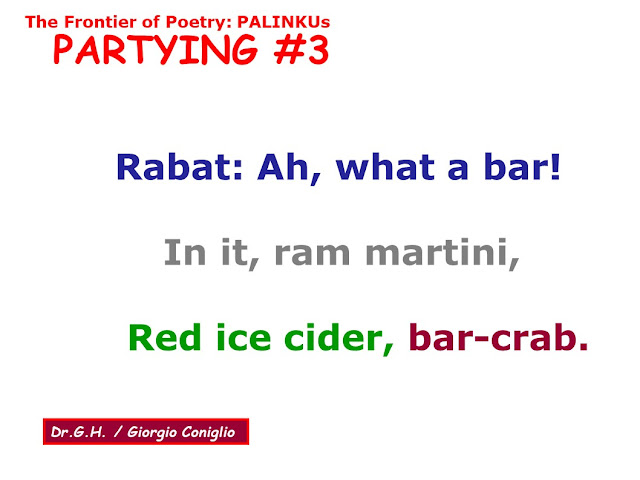In this post, we will continue with our novel form of poetic wordplay, inspired by Japanese haiku poetry. This new form, in its English-language version, is used for a terse verse with a total of 17 syllables displayed on three lines. Unlike its classic Japanese analogue, this concoction does not mandate the precise distribution of the syllables among the three lines, but does stipulate that each word in the poem be included in a palindromic phrase or sentence in English (i.e. one that can be read either forwards or backwards).
To help the reader discern the origin of the lyrics, each palindrome (generally occupying one of the three lines of the poem) has been color-coded. And, as you likely surmised, the first verse in this collection has already been published here. Parts #1 and #2 of this foursome were exhibited in November and December, 2020. And astute readers might well have noticed that, as a memory-jog, we have used the 17th of the month for the publication of this material.
And, just in case you have forgotten what palindromes in English are about, your blogsite hosts have arranged a serial set of brief lessons on the topic ('Political Palindromes') which you can review by clicking HERE.
You can view all our "palinku" verses of this type if you proceed with a single click to our more encyclopedic blog "Edifying Nonsense". Click HERE. (Or if you prefer, you can stay on this particular blogsite and look for the offerings for the 17th day of each month -- there are now more than 60 of these.)

No comments:
Post a Comment